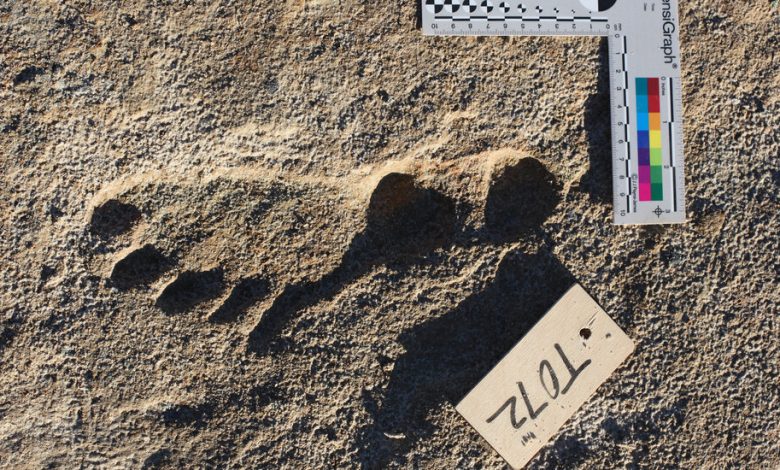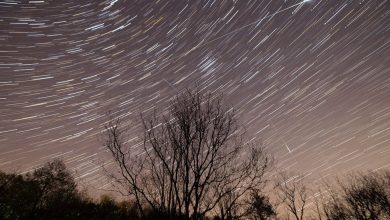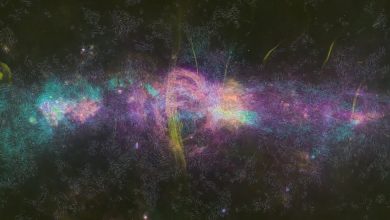New Evidence That Ancient Footprints Push Back Human Arrival in North America

Hidden within the seemingly barren expanse of White Sands National Park in New Mexico are human footprints. But these impressions are much more than random tracks: They are ancient vignettes cast in gypsum-rich sand. The footprints tell stories of hunters stalking a giant sloth; a traveler slipping in mud with a child on one hip; children jumping in puddles, splashing in play; and more.
But one question has plagued researchers studying these prints. Exactly how long ago were they made? A paper published in 2021 offered a surprising answer: Humans could have pressed their feet in the sand as early as 21,000 to 23,000 years ago, making the tracks some of the oldest evidence yet found of people in the Americas.
The result elicited both excitement and skepticism, with calls for additional tests to back up the astonishing claims. A new study published Thursday in the journal Science employed additional methods to determine the age of the tracks and adds to the evidence for those surprisingly ancient dates.
“This opens up a whole new chapter in our understanding of the peopling of the Americas,” says Summer Praetorius, a paleoceanographer at the U.S. Geological Survey, who was not part of the study team.
Yet some researchers say the debate is not settled. The date for when humans first entered the Americas has been in contention for nearly a century. Scientists long thought it was no earlier than 13,000 years ago, which is the age of the oldest known stone tools attributed to the Clovis culture, named for the town in New Mexico near where they were found. Recently, most scientists agreed that humans arrived a few thousand years earlier.
But a growing number of sites give tantalizing hints of even older human presence. The dates for human footprints at White Sands place people deep in the North American continent at the height of the Last Glacial Maximum. During that time, ice sheets up to two miles thick were thought to be barricades to passage from Siberia over the Bering Land Bridge.
“We knew it was going to be controversial all along,” said Kathleen Springer, a geologist with the U.S. Geological Survey. So when the team published its earlier study, plans were already in the works for more research.
The dates in the 2021 study relied on analysis of seeds from ruppia, an aquatic grass. Some scientists raised concerns that a phenomenon called the reservoir effect could result in murky radiocarbon results for the aquatic plants. So for the latest study, the team turned to carbon isotope analysis of ancient pollen from terrestrial plants, extracting nearly 75,000 pollen grains from many pounds of sand from layers interspersed with the trackways at the New Mexico site.
The nearly yearlong process revealed pollen from a verdant landscape when cooler temperatures prevailed, as would be expected during the Last Glacial Maximum. Fir, spruce, pine and sagebrush abounded. The largest of these pollen grains, mostly pine, was subjected to carbon analysis at Lawrence Livermore National Laboratory. The team also worked on determining the date of a layer of the White Sands sediments using a method known as optically stimulated luminescence that, in essence, reveals how long quartz sand has sat beneath the surface.
“We’ve got seed ages, we’ve got pollen ages, we’ve got luminescence ages — they all converge,” said Jeff Pigati, also a geologist at the geological survey and a study co-author. “They all agree, and it’s really tough to argue against that.”
Many outside scientists not associated with the work agree.
“It’s kind of a master class in how you execute scientific responses to criticism,” said Edward Jolie, an archaeologist at the University of Arizona. Dr. Jolie, who is affiliated with the Oglala Lakota and the Hodulgee Muscogee, also notes the excitement these finds have for Native people.
“It’s another one of those ‘we told you so,’” he said. “A lot of natives have said we’ve always been here.”
Still, some scientists are not convinced. “We just have to acknowledge that none of these approaches are perfect,” said Loren Davis, an archaeologist at Oregon State University. Among his concerns is that only one sediment layer was dated using optically stimulated luminescence. The method can lack precision as it requires making challenging estimates about factors such as the sample’s moistness since deposition. More luminescence dates from layers of sediment throughout the track layers are vital for confirmation, he said.
But the unique conditions that affect the accuracy for each method are part of the strength of the latest result, said Thomas Stafford, a geochronologist with Stafford Research who was not involved in the work. “If three entirely different dating methods produce similar ages, this is strong evidence that the 21,000-year dates are correct,” he said.
As debate continues over this set of tracks, there are most likely many more discoveries to be made at White Sands. Thousands of tracks pepper the salty landscape.
“There’ll be people working there for lifetimes,” Dr. Jolie said. “There’s that much to do.”



